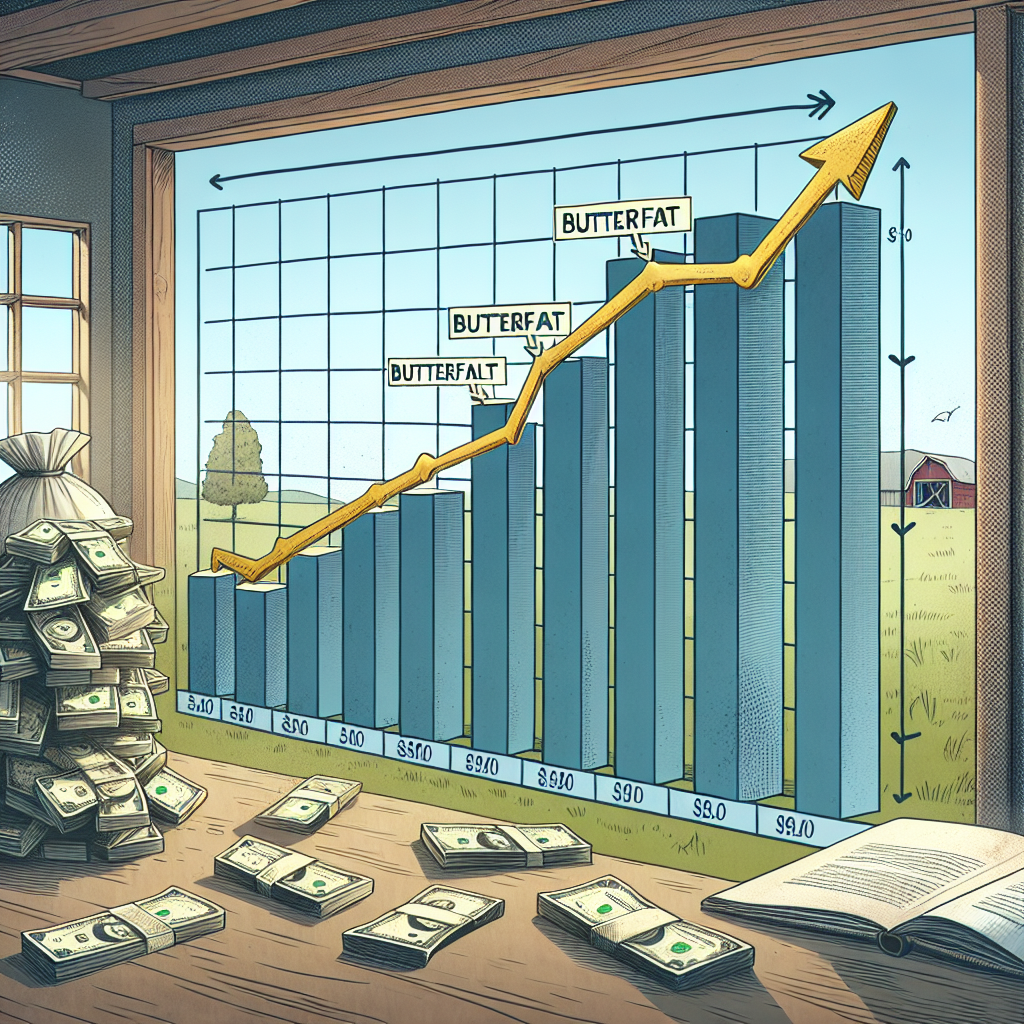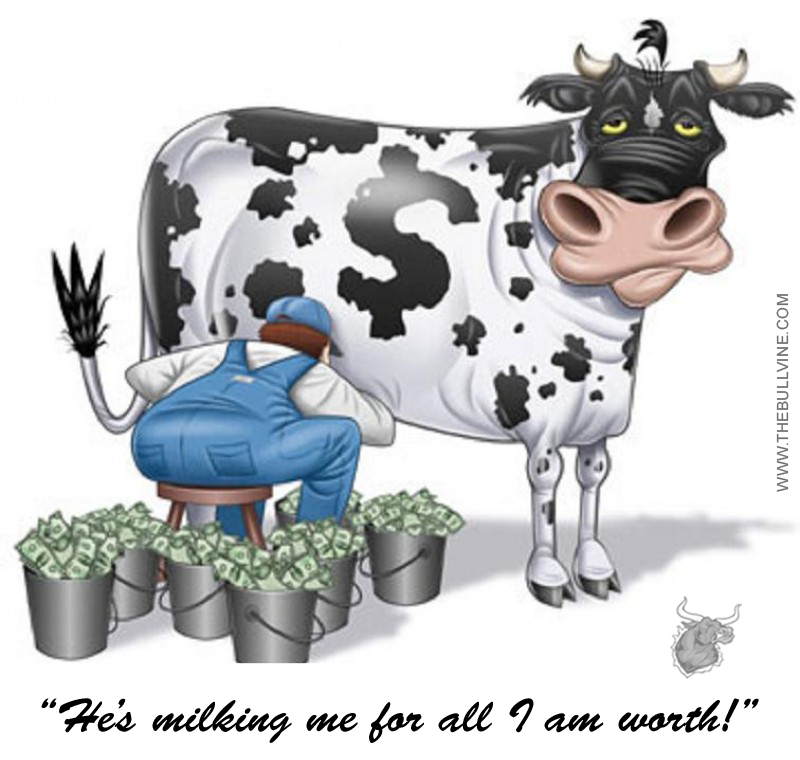Find out how rising milk prices and high butterfat levels are driving up dairy farmers’ profits. Want to know the latest trends and stats? Read our in-depth analysis.
Summary: Have you been keeping an eye on your dairy margins lately? If not, you might be in for a pleasant surprise. August has brought about some noteworthy improvements for dairy farmers, particularly those who have invested wisely in their marketing periods. Profitability has seen a much-needed boost, with milk prices soaring and feed costs holding steady. Curious about the specifics? Let’s dive into the cheese market, where block and barrel prices have hit their highest since October 2022, driven by a drop in cheddar cheese production. This tightening of spot supplies has resulted in firmer prices and unique challenges and opportunities for dairy farmers. And there’s more—while milk production is down, butterfat levels and butter production are smashing records. Cheese production in June dropped 1.4% from the prior year to 1.161 billion pounds, with cheddar production down 9% from 2023 and marking the eighth consecutive monthly decline. This allows dairy producers to capitalize on these quality advances while navigating the challenges of decreased milk quantities. But it’s not just about dairy: changes in crop yields for corn and soybeans also influence feed costs, shaping the broader landscape of your financial well-being. According to the USDA’s August WASDE report, lower soybean meal prices may benefit dairy businesses as feed is a substantial expenditure. In conclusion, higher milk prices and stable feed costs have created an optimistic scenario for dairy margins. The recovery in the cheese market and rising butterfat levels in the face of decreased milk output present complex but attractive options. Dairy producers must be vigilant and respond promptly to changing circumstances, as historically high margins provide ample space for increased profitability.
- Dairy margins saw improvement in early August due to higher milk prices and steady feed costs.
- Block and barrel cheese prices reached their highest since October 2022, mainly due to reduced cheddar cheese production.
- Cheese production in June 2023 fell 1.4% from the previous year, with cheddar production down 9%.
- Butterfat levels and butter production are at record highs despite the decline in milk production.
- USDA’s August WASDE report indicates lower soybean meal prices, potentially reducing feed costs for dairy farmers.
- The current favorable conditions in milk prices and feed costs offer a chance for higher profitability in the dairy industry.

Have you observed any recent changes to your milk checks? You could be wondering why your earnings have suddenly improved. Well, it’s not all luck. Dairy margins have increased considerably in the first half of August, owing to rising milk prices and record butterfat levels. This increase boosts profitability and provides a much-needed respite from the constant feed expenses. But what is truly driving this favorable shift? Let’s go into the specifics and examine how these changes affect the dairy industry.
Surging Milk Prices and Steady Feed Costs: A Recipe for Improved Dairy Margins
The dairy market is navigating a complicated terrain full of difficulties and opportunities. Dairy margins improved significantly in the first half of August, primarily due to rising milk prices. Due to solid cheese market dynamics, dairy producers are better positioned as CME Class III Milk futures rise. Even though feed prices have stayed consistent, this constancy has been critical in increasing profitability. The rise in milk prices and steady feed costs provide a balanced equation that improves total margins, allowing farmers to run their businesses more successfully despite continued problems.
Have You Noticed What’s Happening in the Cheese Market? It’s Been Quite a Ride Lately.
Have you observed what’s going on in the cheese market? It’s been quite the trip lately. The CME Class III Milk futures have gained dramatically owing to a strong cheese market. Last week, block and barrel prices at the CME reached record highs not seen since October 2022. This increase is primarily due to a decline in cheddar cheese output, which has reduced spot supply and caused prices to rise in recent weeks.
Cheddar output, in particular, has been declining steadily, down 9% since 2023. This is the sixth straight monthly decline. Several variables contribute to this tendency, including high temperatures and persistent herd health difficulties associated with the avian flu pandemic. These factors have produced a perfect storm, drastically reducing cheddar yield.
Consequently, lower output has resulted in tighter spot supply and higher pricing. The drop in cheese output adds another layer of complexity to the market, making it critical for dairy producers to remain knowledgeable and adaptable. Are you ready for these upheavals in the cheese market?
Did You Know? Rising Butterfat Levels Amid Declining Milk Production
Did you know that, although total milk output has decreased, butterfat levels in milk have increased significantly? This may appear paradoxical at first look, yet it is correct. Butterfat percentages have reached all-time highs, regularly outperforming previous year fat tests since June 2020. What drives this phenomenon?
While overall U.S. milk production is down 0.9% year over year through June, the lowest level in four years, the quality of the milk produced is impressive. Butter output in June increased by 2.8% from the previous year to 169.15 million pounds due to rising butterfat content, demonstrating the industry’s flexibility and resilience.
This increase in butterfat levels has given a silver lining among the difficulties. With butterfat percentages at an all-time high, dairy producers may capitalize on these quality advances while navigating the challenges of decreased milk quantities. This potential maximizes profitability and efficiency in processing, guaranteeing that each drop of milk produces the best possible return. The rise in butterfat levels enhances the quality of dairy products and provides an opportunity for dairy producers to adjust their production strategies to maximize profitability.
Ever Considered How Crop Yields Influence Your Feed Costs?
Let’s take a quick look at feed expenses and crop yields. Have you looked at the USDA’s August WASDE report? It’s quite an eye-opener! They have increased yield and production predictions for maize and soybeans. But what does this imply for us in the dairy farming industry?
For openers, predicted corn-ending stockpiles have decreased marginally. This is mainly owing to fewer harvested acres and increased predicted demand. Less maize will be available, which may keep feed prices flat or raise them somewhat.
Conversely, since July, soybean ending stockpiles have risen dramatically by 135 million bushels. This spike has placed downward pressure on soybean meal costs, giving your feed budget some breathing space. Lowering soybean meal prices may be beneficial since feed is a substantial expenditure for dairy businesses. How will you modify your feeding plan in light of these changes?
The Bottom Line
As previously discussed, higher milk prices and stable feed costs have produced an optimistic scenario for dairy margins. The current recovery in the cheese market and rising butterfat levels in the face of decreased milk output present complicated but attractive options. These options include adjusting production strategies to focus on high-butterfat products, optimizing feed plans to take advantage of changing crop yields, and closely monitoring market dynamics to make informed pricing decisions. Furthermore, shifting crop yields influence feed costs, emphasizing the need for strategic planning.
Dairy producers must be watchful and respond promptly to these changing circumstances. With historically high margins, there is plenty of space to strategize for increased profitability. How will you take advantage of these large profit margins? What techniques will you use to optimize your profits? We encourage you to share your strategies and learn from each other, as the answers to these questions guide your dairy operation’s future success.













